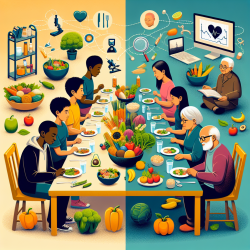Understanding Food Insecurity and Its Impact on Health Disparities
Food insecurity is a pressing issue that affects millions of people across the United States, particularly those from lower socioeconomic backgrounds and racial and ethnic minority groups. According to the research article "Food Insecurity, Neighborhood Food Environment, and Health Disparities: State of the Science, Research Gaps and Opportunities," food insecurity is closely linked to poor dietary quality and an increased risk of diet-related diseases such as cardiovascular disease, diabetes, and certain types of cancer.
The Role of Neighborhood Food Environments
Neighborhood food environments play a crucial role in perpetuating health disparities. Those living in under-resourced areas often have limited access to supermarkets or large grocery stores, which restricts their ability to obtain fresh and nutritious foods. This lack of access contributes to higher rates of diet-related chronic diseases among these populations.
Research Gaps and Opportunities
Despite the growing body of literature on this topic, significant gaps remain in our understanding of the pathways linking food insecurity and neighborhood food environments to health disparities. The research highlights the need for further studies to explore these pathways and identify effective intervention strategies.
Strategies for Practitioners
As a practitioner, there are several strategies you can implement to address food insecurity and promote health equity:
- Community Engagement: Work with local communities to understand their specific needs and challenges related to food access.
- Partnerships: Collaborate with local organizations, policymakers, and researchers to develop and implement effective interventions.
- Education: Educate patients and communities about the importance of nutrition and healthy eating habits.
- Advocacy: Advocate for policies that improve access to healthy foods and address the root causes of food insecurity.
Encouraging Further Research
Practitioners are encouraged to stay informed about the latest research and developments in this field. Engaging in further research and participating in conferences and workshops can enhance your understanding and ability to address food insecurity effectively.
To read the original research paper, please follow this link: Food Insecurity, Neighborhood Food Environment, and Health Disparities: State of the Science, Research Gaps and Opportunities.










